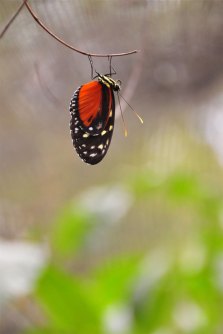Winter Madder
January 23, 2010
With winter rains pouring, creeks bristling almost over capacity, lightening striking Redwood trees… This has been a wonderful week of weather. And due to the predominant quiet gray light, it felt appropriate to pull out the dried madder roots and prepare a dye vat whose colors would inevitably warm the heart and soul.
Madder has rhizomatous roots, and spreads effortlessly across most landscapes. I’ve seen it growing in Wyoming, all through California, and have heard reports of it successfully being cultivated in the central and Northeastern states. Its brilliant orange/red color releases into the dye vat within a couple of hours of gentle heat. This dye lot turned a shade more orange than my other winter vats, which have been predominantly quite red.
I recommend the book, The Wild Root of Madder for your natural dye literary collection. It surveys the history, and lore of madder’s use within Persia. The traditional madder root dyer’s were well regarded artisans.. During the dissemination of synthetic dyes in the late 19th and early 20th century, the Iranian government banned there use– in an effort to to protect the natural dyes, and the craftspeople who used them.
Madder’s deep orange-red is a familiar color often seen in butterfly wings, berries, mushrooms, and autumn leaves.






January 23, 2010 at 11:00 pm
GORGEOUS! just LUV that orangey color!!
January 23, 2010 at 11:32 pm
Thanks for the little plant profile ^+^ I am going look into it more & see if I can spot it growing around my locale.
January 24, 2010 at 1:39 am
Hi,
You’ll likely find a plant called gallium mollugo– its the naturalized version of madder root. Its known as a ‘weed’ if you google this plant, or go to the USDA plant database and type this in- you’ll see pictures of it.
January 24, 2010 at 10:30 pm
Ah, excellent. Thanks for the tip!
January 24, 2010 at 3:52 pm
fine color. my madder experiments haven’t worked out, but someday i may try it again. i will look up the book, thanks for a new lead.
January 24, 2010 at 3:52 pm
i meant my madder growing, not dyeing. it’s the gardener’s fault!
February 9, 2010 at 3:30 am
Lovely color.
It’s not “banned there use” but banned their use.
April 3, 2010 at 2:36 am
Rebecca,
your work is so exciting to me I can’t stand it. I want run over to where ever you are and get my hands deep into the art of plants. Wow. So much to learn for me. I can’t wait..
April 3, 2010 at 3:14 am
Hi Molly!
Thanks! I so look forward to working with you at some point soon!
I hope to have a workshop in Marin in the near future..